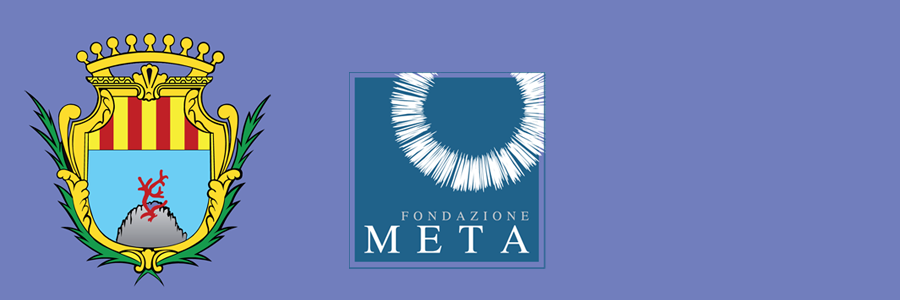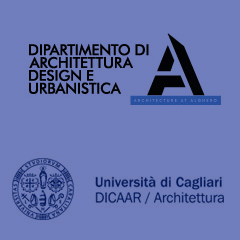
neo~
local
design

Share on:

Digital visualization technology for the valorization of cultural heritage
26 september 2015
Lo Quarter_Conference Hall - Alghero
Computer graphics, virtual and augmented reality have proved extremely valuable tools for disseminating cultural heritage.
Thanks to the broad diffusion of online smart devices they offer completely new approaches to promoting historical cities, monuments and archeological sites, opening the way to new ways for the valorization touristic districts and for empowering the experience of cultural heritage.
This emerging field is a crossroad for various disciplines and skills: the technical domain, to take maximum advantage the potential of innovating the message; research in cultural dissemination, to ensure that information is accurate; expertise in the presentation and information ‘mise en scene’, to engage the public.
The Alghero Department of Architecture, Design and Planning of the University of Sassari and the Alghero Municipality, leader of the International Augmented Med - I AM project have organized, for Saturday September 26, a retreat on innovative techniques for heritage valorization.
The meeting will gather in Alghero a selection of international research groups and take place in parallel with the first International Festival on new technologies for heritage valorization and with the second edition of the Neo-Local Design Summer School organized by DADU.
The event is meant to be a way to asses the state of the art in this area, presenting approaches, solutions, technologies and case studies, and discussing new ways to combine technological innovation, cultural dissemination and tourism.
The International Augmented Med - I AM project was funded within the European ENPI CBC MED 2007-2013 programme.
The International Neo-Local Design Summer School was made possible also thanks to the Erasmus and UNISS Visiting Professor programmes.
Re-thinking local knowledge as a major asset and using design as a vehicle to combine tradition with innovation …
in collaboration with:

supported by:

organized by:

10.00
Reusing 3D surveys of Cultural Heritage for virtual tourism applications
Re-thinking cultural tourism from the shop
Gabriele Guidi, Politecnico di Milano
Documenting Cultural Heritage with digital technologies is nowadays a well established practice in many different domains, ranging from the technical documentation for restoration, 3D modeling for archival purposes, digital acquisition for scientific studies, or 3D representation for virtual and interactive applications. Different aims lead generally to different and specific digitization projects, and often different initiatives do not interact each other.
Recently the Computer Vision and Reverse Engineering Lab at Politecnico di Milano has contributed with 500+ digitizations, to the massive 3D acquisition of two museums in Milan, in the framework of the European project 3D-ICONS (http://3dicons-project.eu/).
3D-ICONS brings together partners from across Europe with the relevant expertise to 3D digitize architectural and archaeological monuments and objects identified by UNESCO as being of outstanding cultural importance. The project has contributed content to the EUROPEANA portal, increasing the critical mass of engaging 3D content available to EUROPEANA’s users.
Recent sub-projects demonstrates how the proper reuse of this large dataset can greatly help in generating significant and cost-effective virtual applications starting from materials originated with a completely different purpose. Starting from this example the talk will discuss the general problem of creating virtual applications by using as much as possible existing resources, and the various connected scenarios.
Gabriele Guidi
Associate Professor of Reverse Engineering at Politecnico di Milano
He received his M.S. degree in Electronic Engineering in 1988 and Ph.D. in 1992 from the Universities of Florence and Bologna respectively. He started his researches working on ultrasound equipment for biomedical imaging and from 1999 he began to explore 3D imaging technologies applied to Cultural Heritage under the supervision of Jean Angelo Beraldin, leading the digitization of important artworks from Donatello and Leonardo da Vinci.
He coordinated the 3D scanning and mesh processing activity within the Rome Reborn project directed by Bernard Frischer, that led to new digital model of ancient Rome. In the last ten years he has directed the digitization of archaeological sites in Italy and abroad, including whole museums and their contents.
He is also involved in 3D metrology, equipment characterization and definition of 3D standards.
He has been contributing to the scientific committees of several international conferences; he chaired VSMM2012, contributed as Program and Paper Chair to Digital Heritage 2013 and is now International Program Co-Chair of Digital Heritage 2015.
Gabriele Guidi is Senior Member of the IEEE and serves as reviewer of several ISI international journals in the 3D imaging field.
10.25
Augmented Reality of the Roman Theater of Byblos
Daniel Asmar, the American University of Beirut, Libano.
Historical research work, combined with the development of the appropriate technical solutions to recreate the augmented world, are at the center of a pilot project carried out in Lebanon to virtually reconstruct the Roman theater in Byblos, one of the oldest continuously inhabited cities in the world.
Daniel Asmar
the American University of Beirut, Libano
Daniel Asmar is an Associate Professor in Mechanical Engineering at the American University of Beirut. Daniel holds a Bachelors degree in Mechanical Engineering from the University of Waterloo, a Master’s degree in Mechanical Engineering from the American University of Beirut in 2002, and a Ph.D. in Systems Design Engineering from the University of Waterloo in 2006.
Daniel’s research interests are in Robotics and Computer Vision.
Specifically, he has interests in visual perception, autonomous robot navigation and mapping, environment representation and recognition, augmentation techniques in Archeology and cultural heritage, and segmentation methods in Computer Vision.
He has several publications in these areas in refereed journals and conference proceedings Daniel is a senior member in IEEE and is the advisor of the ASME chapter at AUB.
10.50
The Museum of Dar-As-Saraya
Ahmed A. Y. Freewan, Jordan University of Science and Technology
Dar-As-Saraya Museum at Irbid-Jordan in a pilot project presenting the evolution of the building, originally a 19th Century castle built by the Ottomans.
Over time, and prior to restoration works initiated by the Department of Antiquities in 1994 to turn it into a museum, the building experienced many different utilizations.
Ahmed A. Y. Freewan
Jordan University of Science and Technology The Museum of Dar-As-Saraya
Ahmed A. Y. Freewan, who holds a Ph.D., from the University of Nottingham, UK, is associate professor of Green Architecture and Building Technology at Jordan University of Science and Technology.
Dr. Ahmed has a bachelor degree in Architectural Engineering and has taught in Jordan, UK, and UAE.
Dr Freewan’s research interests include Eco Friendly and Sustainable Cities, Green Building Policies and Guidelines, computer simulation for building energy performance.
11.40
Digital Mont’e Prama: digital valorization of an extraordinary protostoric sculpture complex
Marco Agus, CRS4, Sardinia
Digital Mont’e Prama is a long-term scientific and technological research project aiming at 3D acquisition and digital valorization of the Mont’e Prama complex, an extraordinary collection of stone fragments created by Nuragic civilization in Western Sardinia, and depicting models of prehistoric buildings as well as larger-than-life human figures representing archers, warriors, and boxers.
Marco Agus
CRS4, Sardinia
Marco Agus is a researcher in the Visual Computing (ViC) group at the Center for Advanced Studies, Research, and Development in Sardinia (CRS4).
He holds a Laurea (M.Sc.) degree in Electronics Engineering (1999) and a Ph.D. degree in Mechanical Engineering (2004) from the University of Cagliari, Italy.
His research interests include large model rendering of novel displays, volume visualization, haptic and surgical simulations.
He has participated as key developer in industrial and research projects for the creation of real-time visual and haptics simulators.
His research is published in book chapters, journal and conference papers in the area of computer graphics. He served as program committee member and reviewer and presented tutorials at international conferences.
The Visual Computing Group
CRS4, Sardinia
The Visual Computing group is dedicated to developing powerful interactive 3D tools for exploration of 3D environments and visual simulation. Our expertise is in 3D capture and display technology, multi-resolution data representations, GPU programming, time-critical graphics, external memory algorithms, as well as on applications of virtual reality technology to visual simulation.
Our projects range from desktop 3D tools to parallel graphics systems driving immersive virtual environments with combined visual and haptic feedback.
Current research activities include out-of-core geometry and color processing tools for the 3D scanning pipe-line, time-critical scalable local and distributed solutions for visual exploration of massive 3D surface and volume models, and advanced interactive systems based on novel 3D “light field” displays.
12.15
A new way of seeing. Innovative techniques to re-introduce heritage: the Alexandria Video Mapping Project
Yasser Aref, Bibliotheca Alexandrina, Menoufeya University Egitto
Advances in visualization and multi media technologies, such as augmented reality techniques, offer today a new way perceiving cultural heritage, allowing a deeper understanding of its values.
An international cultural center and a symbolic powerful symbol, evoking heritage and history, the Bibliotheca Alexandrina took the advantage of augmented reality techniques to bring Alexandria’s heritage the local citizens in a new way.
The presentation will show the implications and impacts of a video mapping pilot projec held in the Library of Alexandria in may 2015.
Yasser Aref
Bibliotheca Alexandrina, Menoufeya University Egitto
Yasser Aref is Associate Professor at the Department of Architecture of Menoufeya University, Egypt. A practicing architect and Principle Researcher at the Alexandria and Mediterranean Research Center, Bibliotheca Alexandrina,
Yasser Aref was involved in many EU-funded projects such as EuroMed Heritage, Ramses II and ENPI CBC Med.
His research interests are conservation of cultural heritage of Alexandria. Yasser Aref was responsible for the 3D video mapping Project, for the “International Augmented Med (IAM)”.
12.40
Designing new perceptual experience with augmented and immersive reality. Venice’s Canalview
Marco Luitprandi, Nuovostudio Factory, Venezia
Nuovostudio’s Canalview immersive virtual interactive tour of Venice’s Grand Canal, which was chosen for Italy’s Pavillion at the 2010 Expo in Shanghai, is one of many innovative projects by the studio in the area of heritage and cultural valorization
The project was developed in collaboration with Officine Panottiche, Venice
Marco Luitprandi
Nuovostudio Factory, Venezia
Marco Luitprandi is the driving force behind nuovostudio, a communication design firm based in Venice, specializing in interaction design with special emphasis on cross-media.
Nuovostudio develops projects in signage, graphic and corporate design, works with video installations, interactive web and mobile apps, virtual and augmented reality projects based on immersive video and photography.
Program
9.30_Opening
Nicolò Ceccarelli introduction
10.00_Gabriele Guidi
Reusing 3D surveys of Cultural Heritage for virtual tourism applications
10.25 Daniel Asmar
Augmented Reality of the Roman Theater of Byblos
10.50 Ahmed A. Y. Freewan
The Museum of Dar-As-Saraya
11.20 coffee break
11.40 Marco Agus
Digital Mont’e Prama: digital valorization of an extraordinary protostoric sculpture complex.
12.15 Yasser Aref
A new way of seeing. Innovative techniques to re-introduce heritage: the Alexandria Video Mapping Project
12.40 Marco Luitprandi
Designing new perceptual experience with augmented and immersive reality. Venice’s Canalview
13.10 closing address
The Conference will take place at sala conferenze of the cultural complex Lo Quarter
Largo Lo Quarter, Alghero.